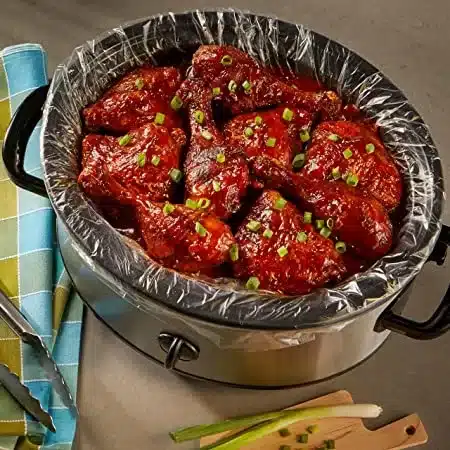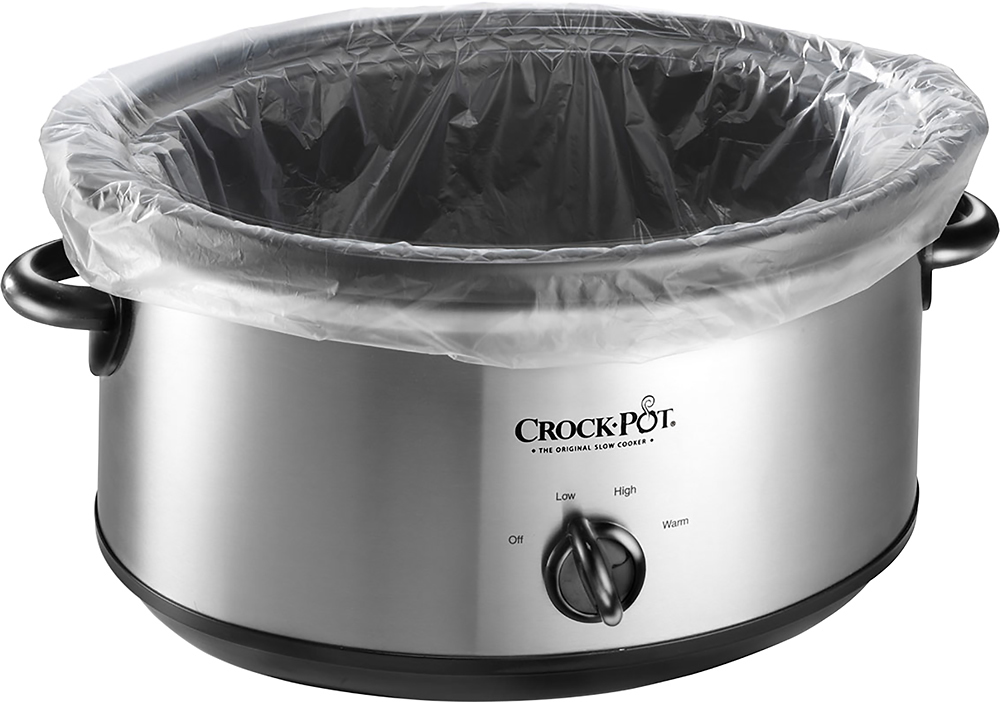
Crock pot liners are convenient and handy for making your slow cooker meals easier to clean up. But they can also be expensive and wasteful, especially if you use your crock pot frequently. Plus, some people may have concerns about cooking their food in plastic bags. So, is there a way to make your own crock pot liners at home? And can you save money and reduce waste by doing so? In this article, I’ll show you how to make your own crock pot liners at home using some common household items. I’ll also compare the cost and benefits of homemade liners versus store-bought ones.
You can make your own crock pot liners at home using parchment paper, aluminum foil, or oil. Parchment paper and aluminum foil can be shaped into a liner that covers the bottom and sides of the crock pot insert. Alternatively, oil can be sprayed or rubbed on the insert to prevent food from sticking.

If you want to make your own crock pot liners at home, you have three main options: parchment paper, aluminum foil, or oil. Here’s how to use each one:
Q: How much money can I save by making my own crock pot liners at home?
A: The amount of money you can save by making your own crock pot liners at home depends on how often you use your crock pot and how much you pay for store-bought liners versus homemade materials. To give you an idea, here are some rough estimates based on Amazon prices as of December 2021:
Assuming you use about 2 sq ft of parchment paper or aluminum foil or 1 oz of oil per liner, here’s how much each homemade liner would cost:
As you can see, making your own crock pot liners at home can save you a lot of money compared to buying store-bought ones.
Q: What are the benefits and drawbacks of making my own crock pot liners at home?
A: Making your own crock pot liners at home has some benefits and drawbacks that you should consider before deciding whether to do it or not. Here are some pros and cons:
Pros:
Cons:
Hi there! I’m Dale, the founder of www.presstocook.com and a food safety expert with over 10 years of experience in the restaurant industry. I have managed busy Asian restaurants in central London where I ensured the highest standards of food safety and hygiene.
I have been trained on the highest food safety standards and have a long track record of delivering the highest food safety in establishments I have been running. I have worked with local authorities and external auditors to pass all inspections with flying colors. I am certified in HACCP (Hazard Analysis and Critical Control Points – Level 2), Food Safety (Level 3), Health and Safety and Restaurant Management All CPD certified and Endorsed by the institute of hospitality. I retrain every year to keep up to date with the latest updates in food safety standards and every changing legislation.
At home I love to cook and play with gadgets, especially kitchen appliances. I have a passion for slow cooking and experimenting with different recipes and techniques. I have tried many different types of crock pots over the years and learned how to use them properly and safely. I also know how expensive and wasteful store-bought liners can be and how easy it is to make your own crock pot liners at home using simple materials.
That’s why I created www.presstocook.com – a kitchen appliance and food safety website where I share my tips, tricks, reviews, and recipes with fellow home cooks who want to make delicious and safe meals with their crock pots and other gadgets. Whether you’re looking for a new crock pot or want to learn how to use yours better, you’ll find everything you need on my website.
You can make your own crock pot liners at home using parchment paper, aluminum foil, or oil. Parchment paper and aluminum foil can be shaped into a liner that covers the bottom and sides of the crock pot insert. Oil can be sprayed or rubbed on the insert to prevent food from sticking.
Homemade liners can save you money and reduce waste, but they may not work as well as store-bought ones for some recipes or slow cooker models.
I hope this article has helped you learn how to make your own crock pot liners at home using common household items. If you have any questions or comments, feel free to leave them below or contact me through my website www.presstocook.com . And don’t forget to check out my other articles and recipes for more crock pot inspiration!
